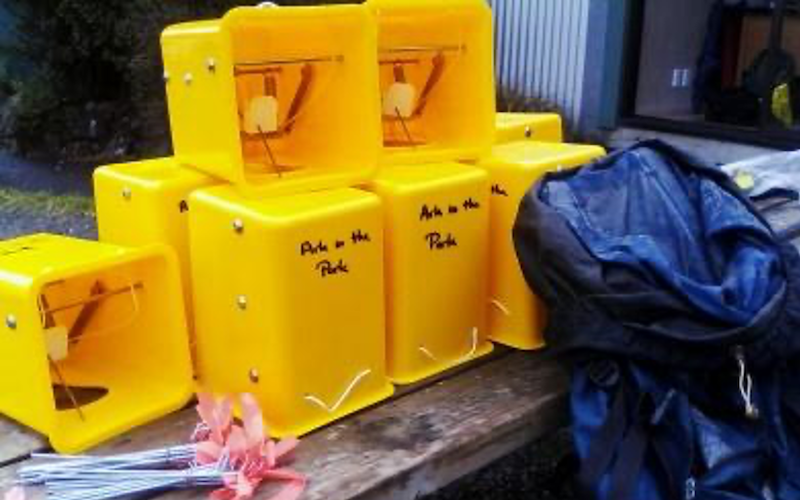Predator Control
Here in Aotearoa/New Zealand we are working to restore the balance from the damage that introduced predators cause to our native plants and animals.
The Ark has run baiting and trapping programmes since 2002, adapting methods and learning as we go, and as our environment changes. You can see live trapping results at the bottom of this page.
Baiting
Baiting is the core work of most of our volunteers, for most of the time.
Our 4,785 bait stations are placed on a 50 x 100 metre grid across our 2270 hectare area. These are baited twice or more per year, guided by bait uptake and rat monitoring data. It takes around 16 weeks to carry out a complete baiting round across the entire project area.
While working on bait lines, volunteers record information as they go on how much bait has been eaten, known as ‘bait uptake’. This guides our next baiting round and choice of toxin.
This map shows the bait uptake at the Ark during the 2018-2019 summer.

Toxin choice
Much of our bait is supplied by the landowner Auckland Council. We have a range of toxins in our toolkit for rotation, to suit particular criteria.
Trapping
Trapping is equally important as baiting, and targets mustelids (stoats, weasels and ferrets) as well as possums.
The Ark has a trapping network which is added to and adapted as new traps and lures are developed.

DOC 200
Targets stoats. Also catches weasels, ferrets, and rats as a bonus. The Ark has 330 in use.

Possum box trap
Sometimes known as a Timms Trap. Targets possums. The Ark has 126 in use.

Goodnature A24
Self-resetting trap. Targets rats and stoats. The Ark has 70 in use.

Modified Victor
Targets rats and stoats. Used to provide extra protection to robin or kōkako nests that are being monitored.

Steve Allan Traps
Targets feral cats. The Ark has 30 in use, and we notify neighbours annually – read more here.
Wasp control
Wasps often rise to high numbers in the Waitākere Ranges late summer and autumn, posing a threat to our native invertebrate populations, nesting birds and ourselves as we work in the bush. In 2016 and 2017 use of Vespex was trialled, which was summarised in this report (PDF).
Recording our catches
Trappers record their catches in a programme called CatchIT. This also allows analysis of which sites are the most important for trapping predators, as well as how traps are performing and whether some may require attention.
The map below shows live updates of trap data, and allows you to look at the catch history for different predator species.
